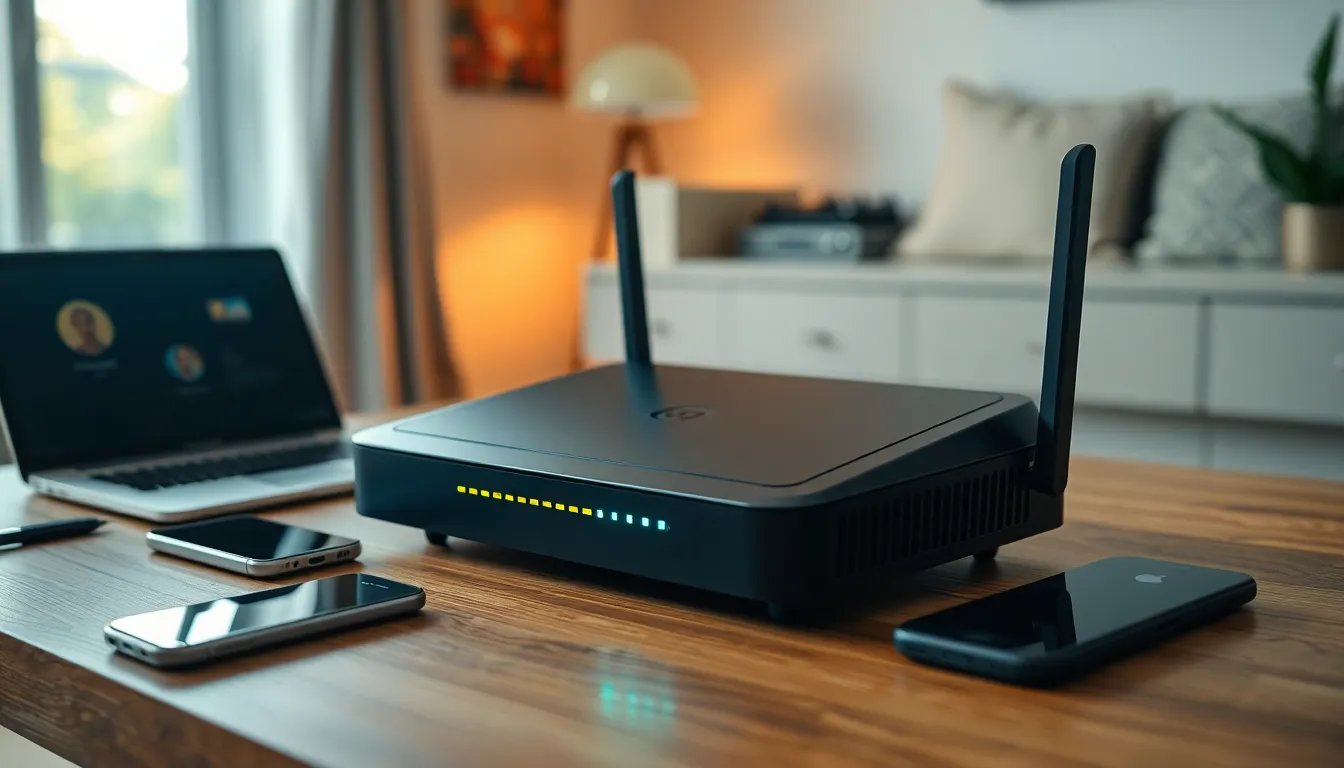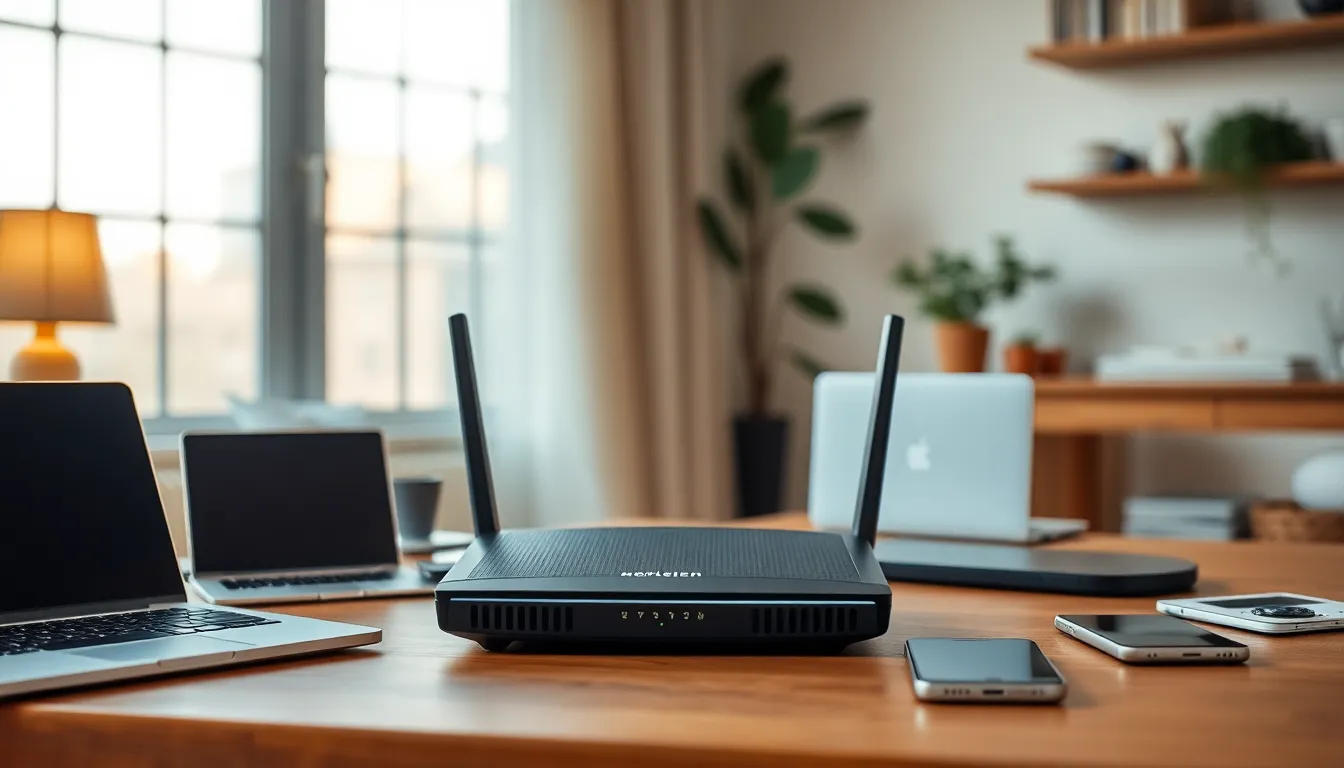Table of Contents
ToggleIn today’s digital age, securing your online privacy is as crucial as locking your front door. But let’s face it—most people wouldn’t know a VPN from a PB&J sandwich. Enter the router VPN setup, the unsung hero of home network security. It’s like giving your entire household a superhero cape, protecting every device connected to your Wi-Fi with a single swoop.
Imagine streaming your favorite shows without the fear of prying eyes or accessing content that’s been mysteriously “geo-blocked.” Setting up a VPN on your router might sound like rocket science, but it’s easier than you think. With a little guidance, you can transform your router into a fortress of online safety. So grab your favorite snack and get ready to dive into the world of router VPNs—where privacy meets convenience, and your internet experience becomes a lot smoother (and a whole lot safer).
What Is Router VPN Setup?
Router VPN setup refers to the process of configuring a virtual private network directly on a wireless router. This setup allows all devices connected to the router to benefit from the VPN’s encryption and security features. Using a router VPN enhances online privacy by creating a secure tunnel for internet traffic.
When a router is set up with a VPN, every connected device, such as laptops, smartphones, and smart TVs, shares the same secure connection. This approach not only streamlines protection for multiple devices but also simplifies management, as users don’t need to install VPN software on each individual device.
Additionally, router VPNs enable users to access geo-blocked content. Many streaming services restrict access to certain content based on geographical locations. A router configured with a VPN can help bypass these restrictions, giving users access to a broader range of streaming options.
Understanding the setup process is crucial for ensuring effective use of a router VPN. Various routers support this feature, but steps for setup can vary based on the router model and the VPN provider chosen. Some common methods include using built-in VPN features or flashing the router with compatible firmware like DD-WRT or OpenWrt.
Router VPN setup ensures that online activities remain private and secure. By protecting sensitive information from potential threats, users can navigate the internet more confidently. They also enjoy the added convenience of having a single network-wide solution for their online security.
Benefits Of Using A VPN On Your Router


Using a VPN on a router provides numerous advantages for enhancing online experiences. Several key benefits stand out.
Enhanced Security
Implementing a VPN on a router significantly boosts security. Every device connected to the network benefits from robust encryption, protecting sensitive data from cyber threats. Hackers often target unprotected networks, but a VPN creates a secure tunnel for traffic. This setup guards against identity theft and data breaches, fostering safer online activities. Moreover, manufacturers frequently release firmware updates, ensuring routers remain secure against emerging vulnerabilities.
Improved Privacy
Privacy receives a substantial upgrade with a VPN on the router. Users’ online activities become less traceable, as the VPN masks their IP addresses. ISPs often track and sell browsing data, but a VPN prevents this, allowing individuals to browse freely. It also thwarts intrusive advertising methods that rely on tracking behaviors online. Enhanced privacy fosters a more comfortable internet experience, allowing users to access their favorite sites without worrying about surveillance.
Access To Geo-Restricted Content
Accessing geo-restricted content becomes effortless when a VPN is set up on a router. Streaming services employ regional restrictions, limiting availability in certain areas. A VPN can bypass these barriers by disguising the user’s location to appear as if they are in a different region. This capability expands streaming options significantly, granting access to exclusive shows and movies around the globe. It also allows users to connect with content libraries previously unavailable in their location, enhancing entertainment choices.
Steps To Set Up VPN On Your Router
Setting up a VPN on a router involves a few key steps that enhance online security and privacy. Follow these guidelines to achieve a smooth setup process.
Choosing The Right VPN Service
Selecting the right VPN service is crucial for optimal performance. Look for a provider that offers strong encryption, a no-logs policy, and compatibility with your router model. Evaluate connection speed since slow performance can hinder streaming and browsing experiences. Research providers with dedicated router support, as they often include useful installation guides. Compare pricing and subscription options to ensure they align with your needs.
Configuring Your Router Settings
Access your router’s configuration page by entering its IP address into a web browser. Log in with the username and password, which are often found on the router’s label. Locate the VPN configuration section in the router settings. Input the required information from your chosen VPN provider, such as server addresses and authentication details. Save the changes and restart the router to apply the new settings. Some routers may require manual firmware updates, so check for compatibility.
Testing Your VPN Connection
Testing your VPN connection ensures everything functions correctly. Visit an IP address checker website to confirm your IP address has changed. Look for an indication of the VPN server location, verifying that your internet traffic routes through the VPN. Additionally, perform a speed test to measure connection speeds. Ensure that streaming services are accessible and that there are no restrictions on geo-blocked content. Troubleshoot any connection issues by reviewing configuration settings, or consult your VPN provider’s support resources.
Troubleshooting Common Issues
Router VPN setups can lead to occasional challenges that may disrupt the user experience. Identifying and addressing these issues promptly ensures optimal network performance.
Connection Problems
Connection issues often arise during the initial stages of VPN setup. Check network cables and ensure they are securely connected to the router. Sometimes a simple restart of the router resolves connectivity issues. Verifying the VPN configuration settings can also help; incorrect input may hinder the connection. Users should confirm they have selected the right server location, as some servers may experience high traffic. Testing the VPN connection using different devices can provide clarity on whether the issue lies with a specific device or the network itself.
Speed Reduction
Speed reduction frequently occurs when utilizing a VPN on a router. Encryption processes can introduce latency, impacting overall internet speed. Users can mitigate this by selecting a nearby server, as shorter distances typically result in faster connections. Another option includes switching VPN protocols; some protocols offer better speeds than others. Regularly updating router firmware ensures optimal performance and security, minimizing potential slowdowns. Checking bandwidth allowances with the VPN provider can also reveal limits that affect speed. Performing speed tests can help measure and address any significant drops experienced while connected to the VPN.





